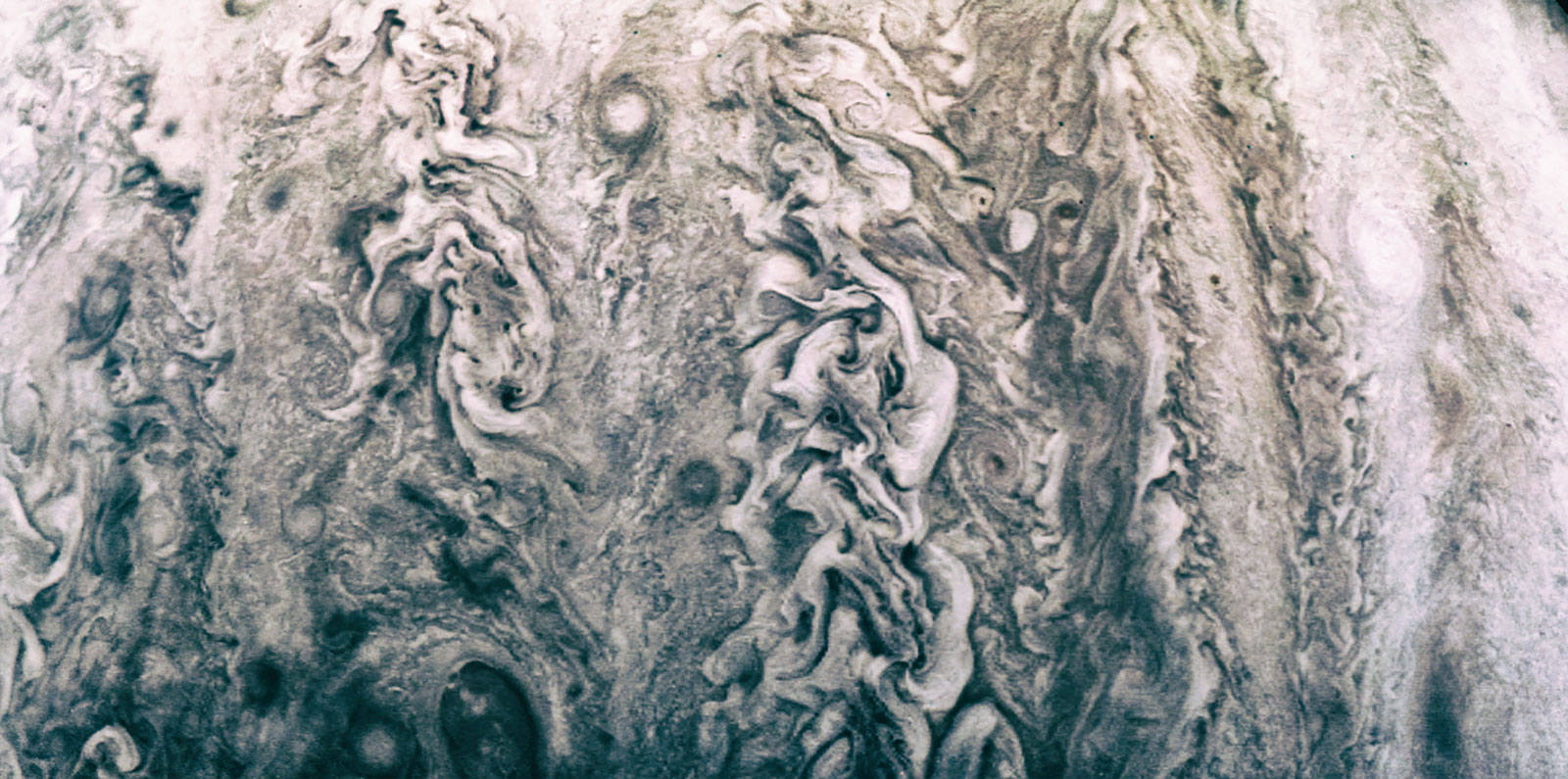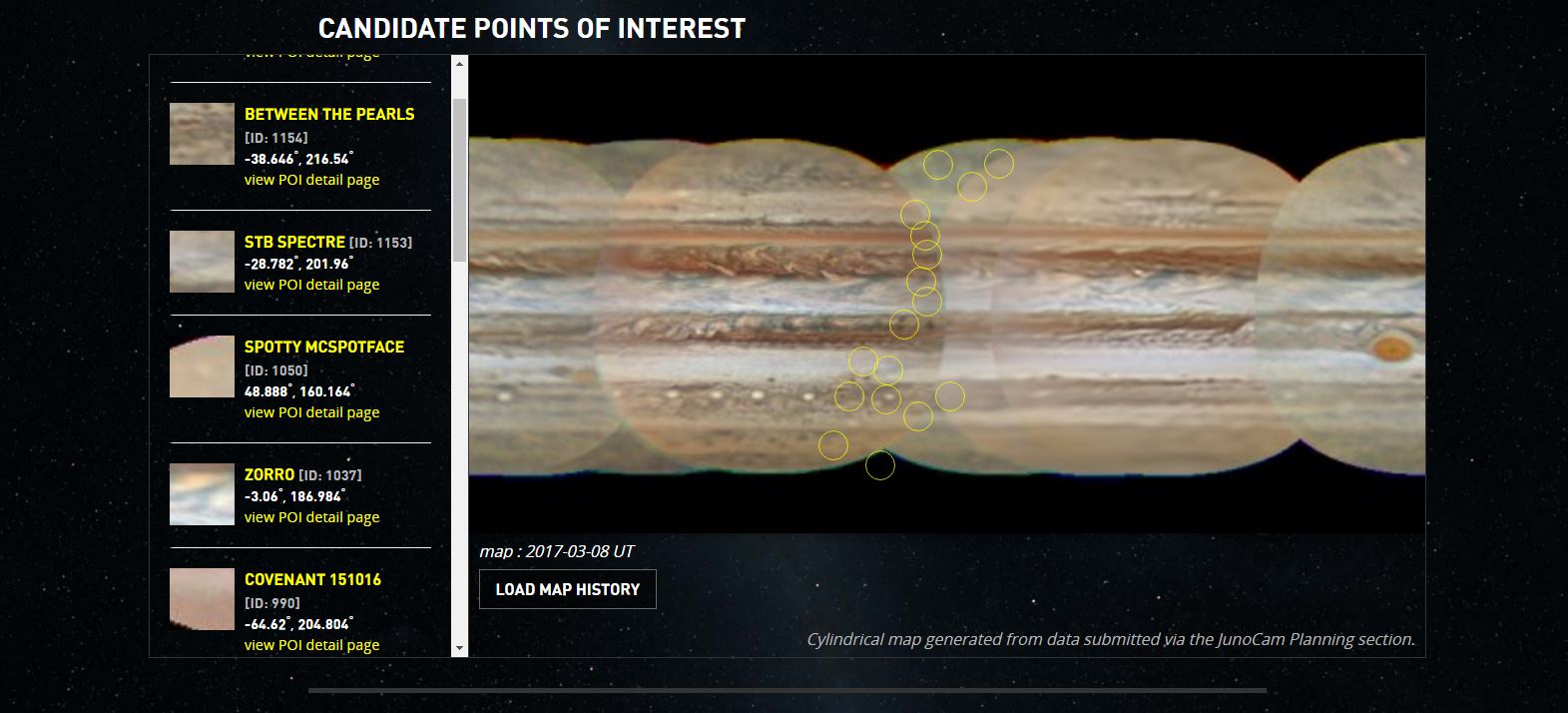What Should NASA's Jupiter Probe Photograph? Cast Your Vote!

Starting today (March 15), citizen scientists can help decide what the Juno spacecraft will photograph during its next flyby of Jupiter.
On board Juno is an instrument called JunoCam that has already snapped some truly amazing images of the swirling surface of Jupiter's cloudy atmosphere. The raw images from JunoCam are uploaded to the project website, and citizen scientists can download and process those images as they see fit. The processed images have ranged from scientific to artistic.
The JunoCam project is primarily an outreach effort, aimed at letting members of the public participate in multiple aspects of a space exploration mission. In addition to having access to the raw images, members of the public can make suggestions about what JunoCam should photograph during the close flybys. Other members can then vote on those suggestions, and the JunoCam team selects the final targets based on those votes. The current voting period starts today (March 15) and ends on March 20. [Jupiter Probe Images Made into Stunning Art (Gallery)]
Juno is currently on a 53-day orbit of Jupiter; its next close approach will take place on March 27. No other probe in history has ever come this close to the Jovian giant. The spacecraft must orbit Jupiter in a very elongated loop that allows the probe to slip in between the planet and a belt of intense radiation that surrounds it. Orbiting inside that radiation belt would quickly destroy the spacecraft and the electronics on board.
Because of this deliberate orbital path, Juno only spends a matter of hours in close proximity to Jupiter. In addition, the spacecraft is rotating, so JunoCam can only take pictures when its "eye" is facing the planet. (The instrument has no moving parts.) JunoCam also has a limited amount of data storage — another restriction on the number of images it can capture during a given flyby.
"We take the highest-vote recipient, schedule that and calculate the data volume the image will require," Candy Hansen, a Juno co-investigator and head of the JunoCam team, told Space.com. "Then we move to the next-highest vote getter in the list, schedule that one and continue scheduling images until we run out of data volume."

Hansen said that for this flyby, the team plans to take multiple images of the north and south poles and about 12 additional images of other features on the planet. The public can vote on regions that Juno might image as it moves from pole to pole along a narrow, longitudinal strip.
Get the Space.com Newsletter
Breaking space news, the latest updates on rocket launches, skywatching events and more!
For each close approach, "the JunoCam team will report any special constraints, special opportunities, or unique goals we are trying to meet," according to the JunoCam website. The team also posts points of interest (POIs) that will be visible to the probe during each flyby. Citizen scientists can also post points of interest to the list.
The list of POIs for the upcoming flyby has already been posted to the website. It includes one of the solid-white stripes that wraps around Jupiter like a belt and a "big, red stripe" near the planet's north pole; a region where different-colored stripes meet; one member of the so-called "string of pearls," which is a series of white storms lined up along the same latitude in the southern hemisphere; a mysterious dark region; and an area that has multiple dark spots that's been affectionately named "Spotty McSpotface."
Go to the JunoCam website to vote on what features of the planet should be photographed during the next flyby.
Follow Calla Cofield @callacofield. Follow us @Spacedotcom, Facebook and Google+. Original article on Space.com.
Join our Space Forums to keep talking space on the latest missions, night sky and more! And if you have a news tip, correction or comment, let us know at: community@space.com.

Calla Cofield joined Space.com's crew in October 2014. She enjoys writing about black holes, exploding stars, ripples in space-time, science in comic books, and all the mysteries of the cosmos. Prior to joining Space.com Calla worked as a freelance writer, with her work appearing in APS News, Symmetry magazine, Scientific American, Nature News, Physics World, and others. From 2010 to 2014 she was a producer for The Physics Central Podcast. Previously, Calla worked at the American Museum of Natural History in New York City (hands down the best office building ever) and SLAC National Accelerator Laboratory in California. Calla studied physics at the University of Massachusetts, Amherst and is originally from Sandy, Utah. In 2018, Calla left Space.com to join NASA's Jet Propulsion Laboratory media team where she oversees astronomy, physics, exoplanets and the Cold Atom Lab mission. She has been underground at three of the largest particle accelerators in the world and would really like to know what the heck dark matter is. Contact Calla via: E-Mail – Twitter









